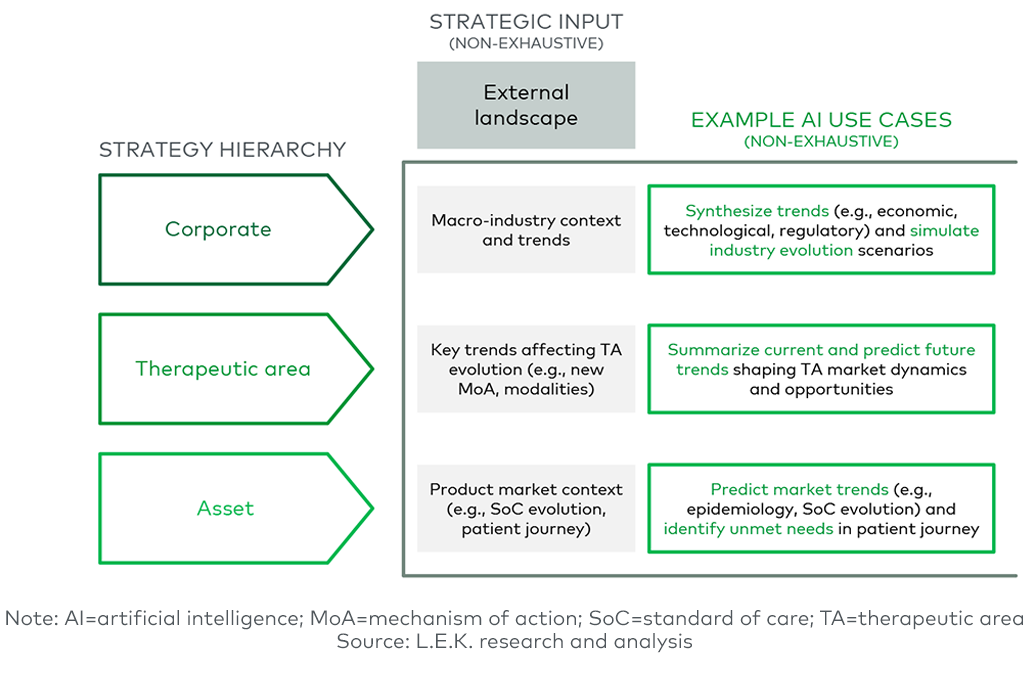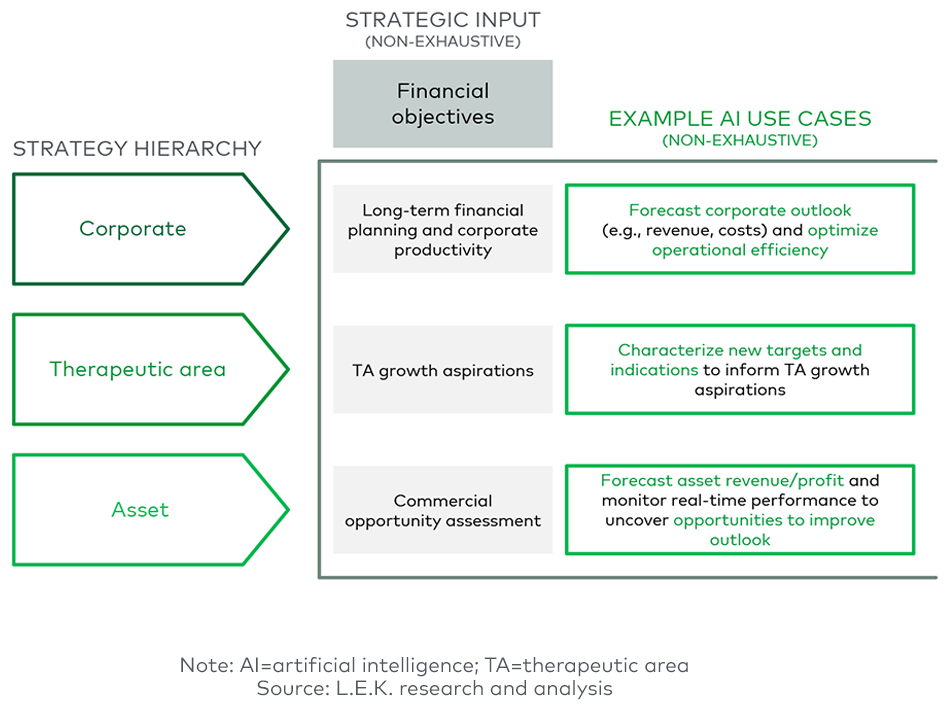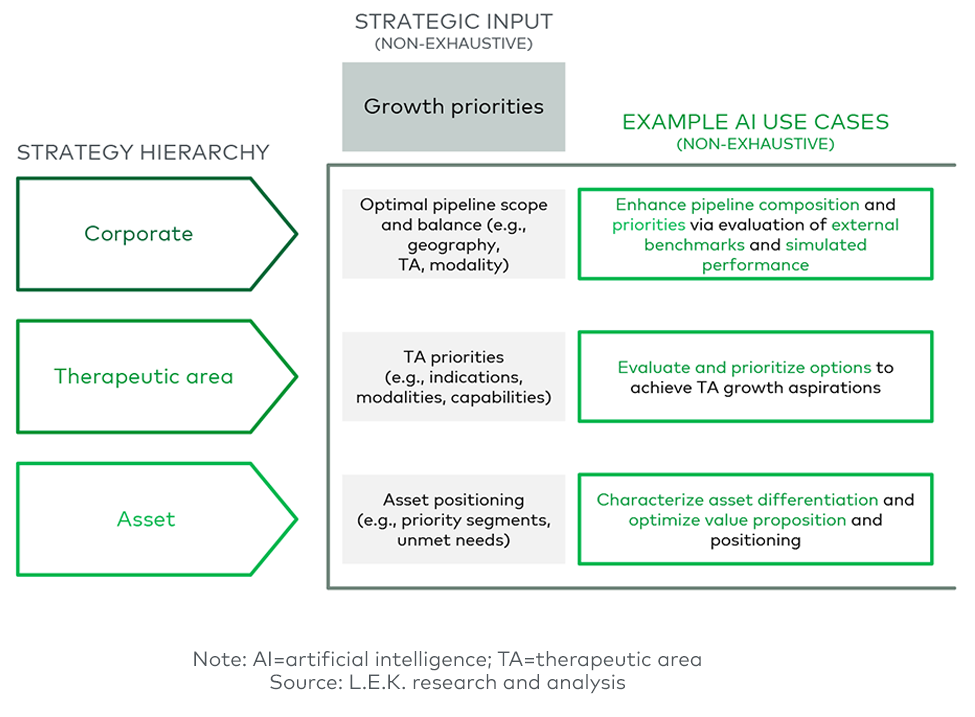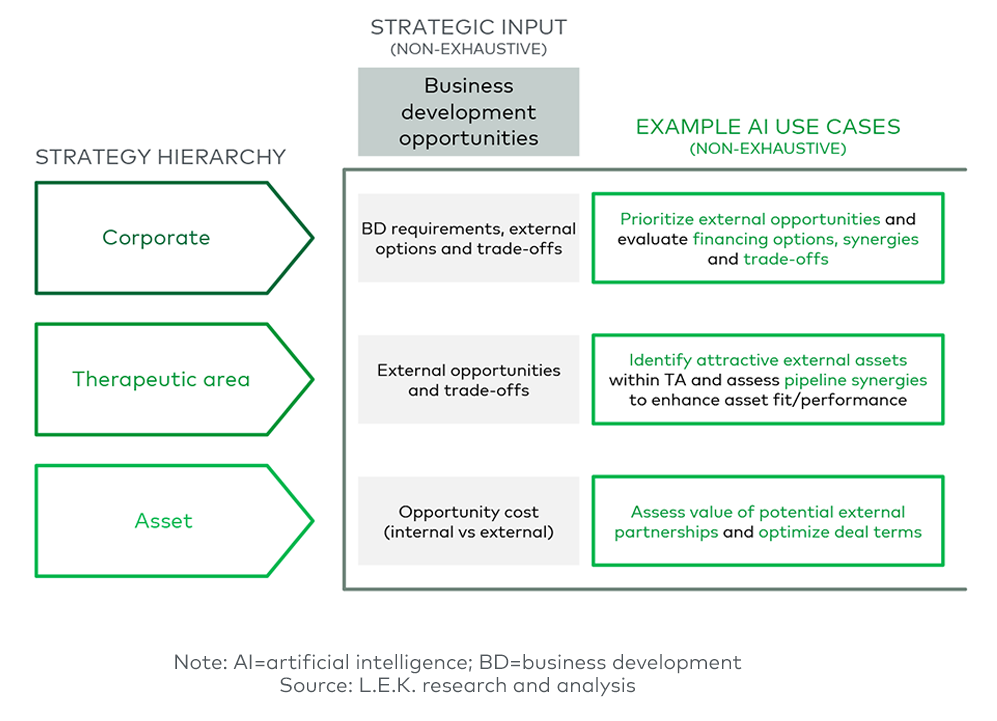Next steps for management
For executives seeking to maximize the strategic potential of generative AI throughout their organization, a thoughtful and structured approach will be essential and includes the following:
-
Defining the vision and governance for AI integration in strategic decision making aligned with company goals
-
Identifying and prioritizing AI tools (e.g., ChatGPT, Bard or customized models) and use cases to maximize utility, leveraging external partners if needed
-
Creating proof of concept to validate feasibility, identify potential issues and gather feedback before deployment
-
Developing an operationalization roadmap, and deploying AI models to enhance decision making, integrating with existing strategic processes
-
Aligning change and risk management for implementation, compliance, and continuous improvement, helping to foster a culture of innovation and to address any privacy, legal and ethical concerns
Generative AI holds immense promise for enhancing biopharma strategy, and embracing its transformative potential will be crucial for maintaining a competitive edge. A thorough understanding of the challenges and a clear strategic vision are essential for successful implementation. At L.E.K., we are committed to collaborating with biopharma executives and other industry leaders to explore these opportunities and navigate the challenges. We welcome the opportunity for a thoughtful dialogue on how generative AI can revolutionize your strategic decision making process.
Glossary
Artificial intelligence (AI): Artificial intelligence refers to the development of computer systems and algorithms that can perform tasks that typically require human intelligence. These tasks include learning, reasoning, problem-solving, understanding natural language, perception and decision making.
Generative AI (GenAI): Generative AI is a subset of AI that focuses on creating new data samples or content based on the patterns and features learned from existing data. These AI models are designed to generate novel and realistic outputs, such as images, text, music or even video, by understanding and mimicking the underlying structure and characteristics of the training data.
ChatGPT: ChatGPT (GPT-4) defines itself as “an advanced AI language model created by OpenAI, based on GPT-4 architecture. It generates humanlike text by predicting and completing sentences, assisting users in tasks like answering questions, creating content, or offering suggestions. ChatGPT learns from a vast data set and improves its responses through fine-tuning.”
Appendix
ChatGPT (GPT-4) prompt for SWOT analysis for a hypothetical biopharma company: Perform a SWOT analysis for a hypothetical pharmaceutical company that could resemble real-life scenarios faced by pharmaceutical CEOs, demonstrating the power of text-based generative AI to provide insights informing strategic decision making. The hypothetical company specializes in infectious disease, oncology and neurology. It has two leading products, both developed in-house, that rank among the top 10 revenue-generating drugs in two of these TAs. These products generated over $5 billion in sales last year, but will face loss of exclusivity by the end of the decade. The company has a broad clinical pipeline focusing on the three TAs, but most of the assets are in the early stages of development. Please analyze the company’s strengths, weaknesses, opportunities and threats, considering factors such as competition, the upcoming loss of exclusivity for the two leading products and the current status of the clinical pipeline.
For more information, please contact lifesciences@lek.com.














